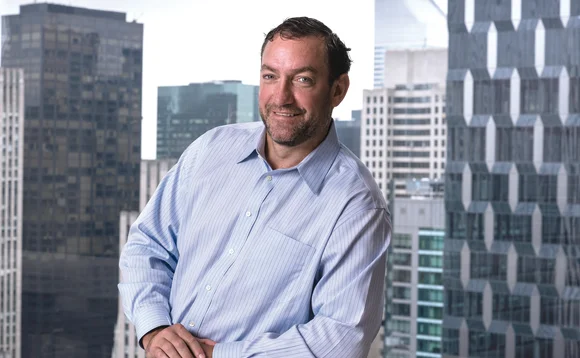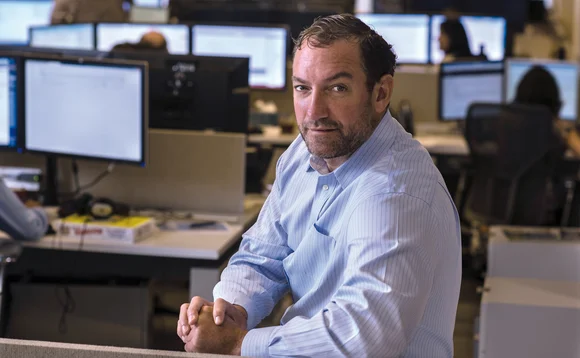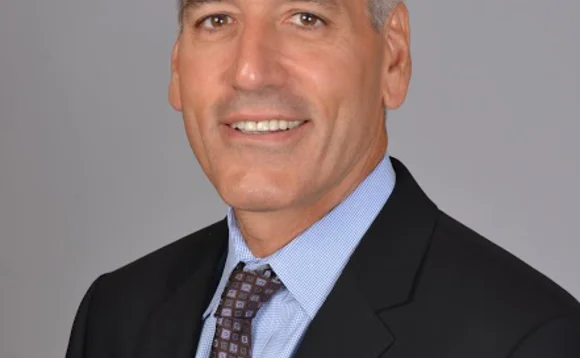Technologically In-Klined: Seer Capital CIO Jack Kline







David Kelly was managing Chase Bank’s quantitative research libraries in New York when he got an internal email from the head technologist in Australia. That email was essentially a list of every technical inefficiency in Kelly’s library. Kelly had never met the guy before.
“At first I was pissed off,” says Kelly, who today is director of financial engineering at Calypso Technology. “Then I realized he was right on all of them.”
Not only did Kelly bow to Jack Kline’s observational abilities, but the two quickly became friends. Years later, when Kelly needed someone to build technology for his start-up consultancy, it was Kline who he called on.
“He’s the best technology person I know, and I’ve been in this industry for 20 years,” Kelly says. “He’s one of the few people that I could not even look at his code and know it was done in the best way possible.”
No one is looking over Kline’s code these days. As CIO of New York-based Seer Capital, a hedge fund with approximately $2 billion under management primarily investing in securitized credit and other credit and hedge-related asset types, Kline doesn’t have to break down the problems with anyone’s databases, because he’s designing them all. That’s not hyperbole—for two years, he was the only technologist on the staff, and every system was his to develop and maintain as he pleased. Today he leads a team of five, all schooled in the Kline way, centered primarily around building asset flexibility into every platform. It’s a philosophy he developed at Tullet Prebon, Amaranth Advisors, and Prologue Capital, and which he put into full force at Seer.
“I’d built a system that you could plug new deal types into within hours. Once the product is in, you have pricing, you have security master help, you have it showing up on a position P&L report, and risk reports. It’s fully in.” — Jack Kline, Seer Capital
Asset Flexibility
Seer Capital is a moderately manned fund, with 40 staff members spread across the 34th floor of the Americas Tower in Midtown Manhattan. Kline has a small, windowless office, but a decoration scheme consisting of little more than a white board and white walls tells the story of how much time he spends in it. He prefers to plunk down in a cubicle next to the trading desks with longtime friend Michael Chepovetsky, a director at Seer, and CFO Walt Tsin.
He was an early hire at Seer but is still an outsider in a way, in that most of his coworkers at that time previously worked for CEO Philip Weingord, when Weingord was head of global markets Americas at Deutsche Bank. But Weingord was familiar with Kline’s work on multi-strategy systems, and thought he’d be perfect for his new start-up hedge fund.
For the first few months of 2009, Kline’s salary, and every other bill at Seer, was coming out of Weingord’s personal capital stock, but ample budget was provisioned to ensure a state-of-the-art tech platform. The IT staff of one had to put every single purchase under a microscope. For example, Kline poured himself into researching possible administrators, which initially included GlobeOp, now part of the SS&C stable. The firm now uses several administrators for its various funds.
Seer really got going in 2009 when it launched its first fund to buy asset-backed instruments under the Federal Reserve’s Term Asset-Backed Securities Loan Facility (TALF) program. From there, the firm quickly diversified, adding its flagship fund for trading in automotive and students loans, residential mortgage-backed securities (RMBS), commercial MBS, collateralized loan obligations (CLOs), and credit and interest-rate hedging products.
“As the year went on, people would come to me and say, ‘Hey, we did an interest-rate swap today, or we did this or that. Can you handle it?” Kline recalls.
The answer was always yes. Seer had needed a system that could book loans, reconcile data between Bloomberg and the administration system, use interest-rate products for hedging, and a buffet of other tasks. Kline, using the knowledge he’d gained at Amaranth and Prologue, cobbled together the framework of such a system in .Net over a single weekend. A version of that system, Spyglass, is still in use today.
“I’d built a system that you could plug new deal types into within hours,” he says. “Once the product is in, you have pricing, you have security master help, you have it showing up on a position P&L report, and risk reports. It’s fully in.”
Because Spyglass handles the entirety of Seer's diverse trading mix, with the potential for more asset types to come, it’s one of the first things shown to potential investors doing their due diligence on the fund.
At Amaranth, Kline learned that it’s impossible to predict when an asset class is going to rise into or fall out of favor. When he arrived in 2003, convertible bonds was the king desk. When he left two years later, convertible bonds was nothing and energy was on its way up. Eventually, energy caused the firm’s collapse when it made $6 billion worth of bad bets on natural gas futures. Since you can’t predict what’s going to be traded tomorrow, he figured you should build systems that can trade one thing tomorrow and something else the next day.
“Under pressure of deadlines, people cave and they build things rigidly in an almost hard-coded way,” says Kelly. “Then you go to add the next product and it’s basically a rewrite, or at least a massive refactoring project. Jack has a knack for understanding, in a very practical way—not a theoretical way, but a very practical way—how to architect things so it’s not a major rewrite. At Prologue, the traders were like kids in a candy shop. Some salesperson at a dealer would offer them currency baskets and they would do it and then tell us afterwards. So we would be saddled with getting currency baskets into the system in some ridiculously short period of time. Thanks to Jack’s direction, we had done things in a way that it was relatively easy to add new products. That is not how things are done most places.”
Bouncing Around
The flexibility of Kline’s systems reflects his career. At Notre Dame, he studied pre-medicine in order to follow in his doctor father’s footsteps, but ended up joining an options and bond trading firm, Chicago Research and Trading (CRT), as a trade support specialist in 1991. He noticed bugs in the systems CRT was developing, but, as a junior hire, could only get permission to identify but not to fix them. He also dabbled in side projects doing analytics on Bloomberg data, through which he learned about the features of various financial instruments.
In 1993, he joined the product analysis group at Chase. When the head of derivatives research and model development came to his group looking for volunteers, he jumped at the chance. There he created what he calls “bleeding-edge interest-rate derivative models” using a system called SNAP. The problem with SNAP was that it took 16 to 18 hours to do book structure analysis, even though a single product only took 18 minutes. He pursued a distributed solution to the problem. By measuring the usage of each workstation, he realized that most of Chase’s compute power was not being used. So he spread SNAP’s computations across the network, cutting analysis time way down and allowing it to be done intra-day.
He left Chase for about 10 months to pursue an opportunity at NeXT, Steve Jobs’ company after he left Apple. But he quickly lost faith in the job when he was assigned to help Merrill Lynch implement a few million dollars of NeXT software and found it all sitting on a shelf, untouched.
When Chase’s head of trading in Australia asked him to come back and run a bullion risk management system in Sydney, he didn’t think twice. He’d spent a year abroad in that country during college, and remained an avid surfer. After four years, from 1996 to 1999, he was called back to New York to take control of Chase’s global commodities desk. Though he led a team of 25, he was generally dissatisfied with the institutional resistance to change. In Sydney he’d released code every two days; in New York it was twice a year.
“At Chase it was like turning a battleship in a lake,” he says. “It was ridiculous how big the code bases were and how poorly written they were—no agility whatsoever. I never pre-optimize a system. You can’t write a system that’s going to do an infinite number of assets, but from experience you know there are certain design patterns you have to put in from the get-go to stay agile.”
On the Move Again
So Kline soon found himself moving on again, this time to inter-dealer broker Tullett Prebon. Tullett’s head of capital markets had been a trader at Chase when Kline was working on SNAP, and offered a chance to build Tullett’s first electronic broking platform as head of capital markets development. At the time, a consortium of banks was trying to steal a chunk of Tullett’s action in the interest-rate swaps market, so the broker commissioned the development of a pioneering system, later called TradeBlade, that would preserve its liquidity. Kline’s group comprised 25 developers, five infrastructure pros, and five people tending to quality assurance. He also liaised directly with 20 people on the trading desk. TradeBlade ended up fundamentally changing the way Tullett traded—the money-market desk in particular went from posting deals on a blackboard one day to working off desktops the next.
But in 2003, a soccer buddy asked Kline to run back-office technology for Amaranth, which was in the process of spinning off from Paloma Partners Management. Kline barely knew what hedge funds did, but the idea of quickly replicating Paloma’s important systems appealed to him. He also wanted a chance to put some of his management techniques in place, like turning his employees from specialists into generalists. “A system has a database, it’s got a system layer, it’s got a front-end,” he says. “You’ve got to understand all those things. It’s not the National Football League—we shouldn’t specialize. I like my guys moving around.”
By 2005, he was one of four candidates considered for the unfilled CIO role. But he didn’t think he was ready. Moreover, he was going through a divorce and suffering from general burnout. He decided to clear his head by working for himself as a consultant. He did some work for Alexandra Investment Management before Kelly brought him on as a partner in Moment Analytics. Its feature product was Roxy, a hedge-fund-in-a-box IT solution for start-up hedge funds. Their biggest client was Prologue, run by a former Chase trader, for which they installed and oversaw an entire technology stack. Before trading commenced at Prologue, Kline was given a sample portfolio of what was going to be traded. He was able to plan tools for pricing, analytics, and execution for those products. Then, the first day of trading, the desk executed a Brazilian swap that had never been mentioned.
“That was a lesson learned,” he says. “They’re never going to tell you everything.”
Light and Agile
Despite the progress at Prologue, now a multi-billion dollar fund, the 2008 financial crisis dried up Moment’s customer pool. Kline left for Seer in January 2009.
Seer has progressed rapidly. It had a 21.6 percent return through the first 10 months of 2012—good for 11th best in the industry among billion-dollar hedge funds, according to Bloomberg.
Two years in, when the budget finally allowed him to make hires, he brought in a few people he knew. For Chepovetsky, this is the fifth place he has worked alongside Kline. They share what Chepovetsky’s daughter calls a “sick sense of humor.” Once when they were working at Tullett, Chepovetsky found a book called The Superior Person’s Book of Words. Kline would stick one of those unrecognizable words into the middle of his longer official reports just to see if anyone had read that far.
“Work with him is very interesting, always,” says Chepovetsky.
Kline doesn’t want to expand his staff any further. He outsources most of his infrastructure services. He plans to invest more in virtualization as soon as the price of licensing the software comes down. He believes strongly that the only hedge funds that should be cranking out software are high-frequency trading shops. A hedge fund staff should be light on its feet and as agile as the multi-asset systems he’s so proud of.
“If someone in the firm comes to us with a business opportunity, we reprioritize quickly,” he says. “It’s all about mindset here. I tell my staff, yes, you’re proud of your code, you want your development peers to like your code—get it on the desk. Get someone using your system and relying on your accuracy or reliability or performance. Be in tune with that.”
IT at Seer Capital
What is your biggest technology challenge?
Cyber security. We already have talking points for all the items mentioned in the Security and Exchange Commission's (SEC's) report. Implementation of certain defenses might be beyond the budget of a firm our size
What have been your notable technology accomplishments at Seer?
Implementing pre-trade compliance along with automated trade allocation compliance across all asset types. Installing Geneva and implementing shadow accounting.
What new technologies do you currently have under evaluation?
High-performance storage where traditional large raid arrays are fronted by solid state storage with high input/output operations per second (IOPS) ratings
What’s on your IT wish list?
Fulfillment of #3.
Jack Kline Fundamental Data
Name: Jack Kline
Title: CIO
Assets Under Management: Approximately $2 billion
Staff: 40 at Seer Capital; 5 IT staff
Education: Bachelor’s of Science in pre-med from Notre Dame
Hobbies: Surfing the Jersey shore, playing club soccer, writing music, former drummer for the band Puppet Truck
Children: Two sons, 17 and 16; and a daughter, 14
Only users who have a paid subscription or are part of a corporate subscription are able to print or copy content.
To access these options, along with all other subscription benefits, please contact info@waterstechnology.com or view our subscription options here: http://subscriptions.waterstechnology.com/subscribe
You are currently unable to print this content. Please contact info@waterstechnology.com to find out more.
You are currently unable to copy this content. Please contact info@waterstechnology.com to find out more.
Copyright Infopro Digital Limited. All rights reserved.
As outlined in our terms and conditions, https://www.infopro-digital.com/terms-and-conditions/subscriptions/ (point 2.4), printing is limited to a single copy.
If you would like to purchase additional rights please email info@waterstechnology.com
Copyright Infopro Digital Limited. All rights reserved.
You may share this content using our article tools. As outlined in our terms and conditions, https://www.infopro-digital.com/terms-and-conditions/subscriptions/ (clause 2.4), an Authorised User may only make one copy of the materials for their own personal use. You must also comply with the restrictions in clause 2.5.
If you would like to purchase additional rights please email info@waterstechnology.com
More on Emerging Technologies
Bank of America and AI, exchanges feud with researchers, a potential EU tax on US tech, and more
The Waters Cooler: Broadridge settles repos in real time, Market Structure Partners strikes back at European exchanges, and a scandal unfolds in Boston in this week’s news roundup.
Bloomberg rolls out GenAI-powered Document Insights
The data giant’s newest generative AI tool allows analysts to query documents using a natural-language interface.
Tape bids, algorithmic trading, tariffs fallout and more
The Waters Cooler: Bloomberg integrates events data, SimCorp and TSImagine help out asset managers, and Big xyt makes good on its consolidated tape bid in this week’s news roundup.
DeepSeek success spurs banks to consider do-it-yourself AI
Chinese LLM resets price tag for in-house systems—and could also nudge banks towards open-source models.
Standard Chartered goes from spectator to player in digital asset game
The bank’s digital assets custody offering is underpinned by an open API and modular infrastructure, allowing it to potentially add a secondary back-end system provider.
Saugata Saha pilots S&P’s way through data interoperability, AI
Saha, who was named president of S&P Global Market Intelligence last year, details how the company is looking at enterprise data and the success of its early investments in AI.
Data partnerships, outsourced trading, developer wins, Studio Ghibli, and more
The Waters Cooler: CME and Google Cloud reach second base, Visible Alpha settles in at S&P, and another overnight trading venue is approved in this week’s news round-up.
Are we really moving on from GenAI already?
Waters Wrap: Agentic AI is becoming an increasingly hot topic, but Anthony says that shouldn’t come at the expense of generative AI.







